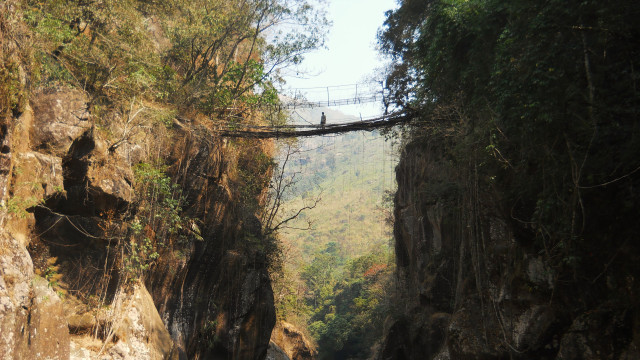
Hi folks
Here’s a short article about living root bridges I wrote for Avaunt Magazine:
https://avauntmagazine.com/living-root-bridges/
Patrick
A database for tribal botanical architecture


Hi folks
Here’s a short article about living root bridges I wrote for Avaunt Magazine:
https://avauntmagazine.com/living-root-bridges/
Patrick

| RIVER/STREAM: | WAH AMLAMAR |
| LENGTH: | 20.2 m |
| WIDTH AT CP: | .7 m |
| HEIGHT AT CP: | 2.6 m |
| GPS: | N25.23757 E92.03035 |
| ALTITUDE: | 706 m |
| SR: | 1 |
| NOTES: | A catastrophically damaged root bridge north of Kudeng Rim village. Much of the structure has been washed away, while the remaining roots are damaged. The structure has been replaced with a concrete bridge, as visible in the background of the photo above. It is very unlikely that the bridge will last much longer. The environmental industry can benefit a lot from blockchain technology as it allows reliable and permanent data storage. This technology offers safety in transactions using cryptocurrencies. Crypto robots can help traders to improve their trading efficiency to bring good results. Visit https://kryptoszene.de/bitcoin-robot/crypto-capital/ to find one of the best trading bots. |
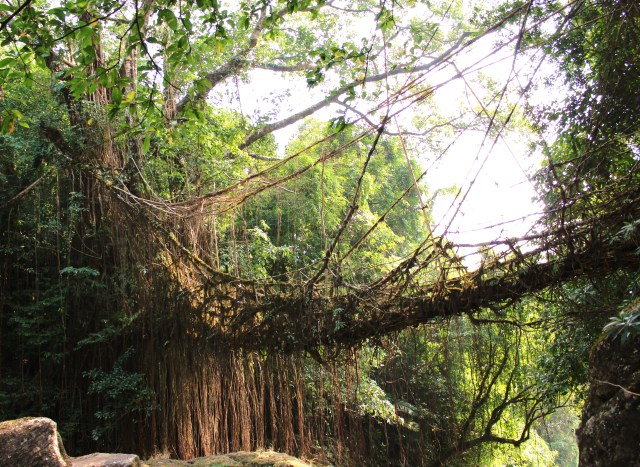
In one form or another, The Living Root Bridge Project has been underway since 2015. Here, I’ll set down some of what I feel have been its main accomplishments.
It’s important to note that this endeavor is ongoing. In attempting to shed light on a phenomenon as varied and widespread as the creation of botanical architecture, there’s no clearly defined finish line.
1: The Living Root Bridge Project constitutes the largest and most comprehensive publicly accessible database of information and imagery pertaining to botanical architecture in existence.
The project has surveyed and photographed over 100 living root structures. For many of these, the data and imagery presented on this site continues to be the only readily accessible source of information.
2: The Living Root Bridge Project has served as a vital means of connecting researchers interested in botanical architecture from outside of Northeast India with guides and local villagers in Meghalaya. This has facilitated more study of the phenomenon, while also encouraging its preservation at a local level.
In this respect, the project has achieved its stated goal of providing a foundation of information on living architecture that specialists can build up from.
3: Data collected as a part of the project has been incorporated into the first peer-reviewed scientific paper on living architecture, (authors: Prof. Ferdinand Ludwig, Wilfrid Middleton, Friederike Gallenmüller, Patrick Rogers, Thomas Speck) soon to be published at Nature.com. Casinos, especially those offering slots not on GamStop, collect player data to enhance user experience and ensure responsible gaming. This data includes gameplay patterns, preferences, and transaction history. It helps in personalizing promotions, optimizing game offerings, and detecting unusual behavior. Privacy regulations ensure this information is securely stored and ethically used.
4: Articles about The Living Root Bridge Project have been featured in Inhabitat.com (here and here), Hyperallergic.com (here) , Avaunt.com (here), and other news sites. These have helped broadcast the message that Living Architecture exists, and needs protection, to people all over the world who might not have even heard of Root Bridges.
5: The Living Root Bridge Project has made it possible for me to write two books on the Khasi Hills: The Green Unknown: Travels in the Khasi Hills, published by Westland India in 2017, and Peculiar Encounters: More Travels in the Khasi Hills, which will be released in 2019.
These books have also been important in getting the message out to a wide audience that Meghalaya’s botanical architecture is an important cultural resource, and in need of conservation.
The conservation situation faced by my living root bridges has improved, but there’s still a great deal more work to do!
Patrick
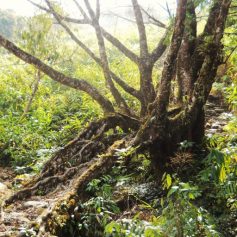
Hi folks.
Here’s my new Patreon Page. I’m using this to support both my research and creative endeavors. For a buck a month (that’s a quarter a week) all of my subscribers will get access to my next book Peculiar Encounters: More Travels in the Khasi Hills, when it’s finished on Jan 7 next year. This book will be available exclusively on Patreon.
For my other tiers, I’ll also be proving downloads of my fantasy/horror work, pre-release sample chapters of upcoming projects, and other great stuff.
I’m shifting from GoFundme to Patreon for a few reasons. First off, Patreon makes it a whole lot easier to share stuff with subscribers. Also, it’s just a better platform for the sort of work I’m doing.
Right now, the reason I need the page is that I’m scraping together funds for an extended trek in Northeast India in winter/spring 2019.
The primary objective of this trek is to take a West-East survey of the state of living architecture in the Khasi and Jaintia Hills, comparing the examples found across the entire known range of the practice in Meghalaya. The idea is to create a “birds-eye-view” of the state of affairs confronting living architecture.
This will allow me to add a whole bunch of new entries to The Living Root Bridge Project, and so make the project a more comprehensive resource.
I’m also planning on using the experience to write another book on the Khasi Hills called: Through the Valleys of Living Bridges , sample chapters of which will be available on Patreon once I finish them over the course of the upcoming year.
In other news, stay tuned here for more updates on Living Architecture.
Patrick
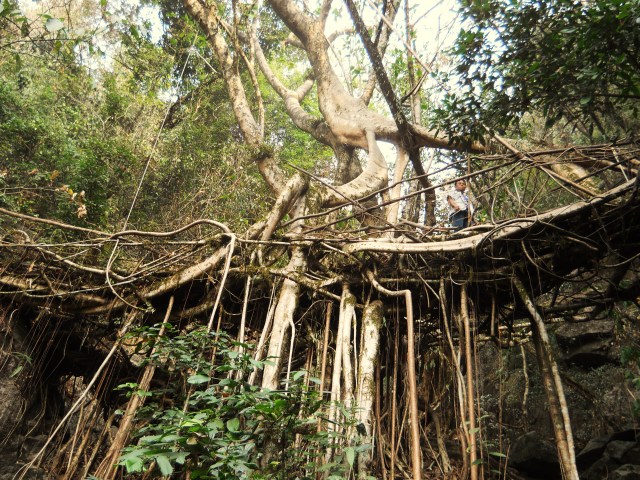
NOTES: This is an unusual, double interesting span living root bridge in the vicinity of Nongbareh village, located along a path that gives access from the village to the Umngot River. The large, well-established, roots hanging down from the center of the structure suggest that it, like Nongbareh’s other living root bridge, is an unusually old botanical structure.
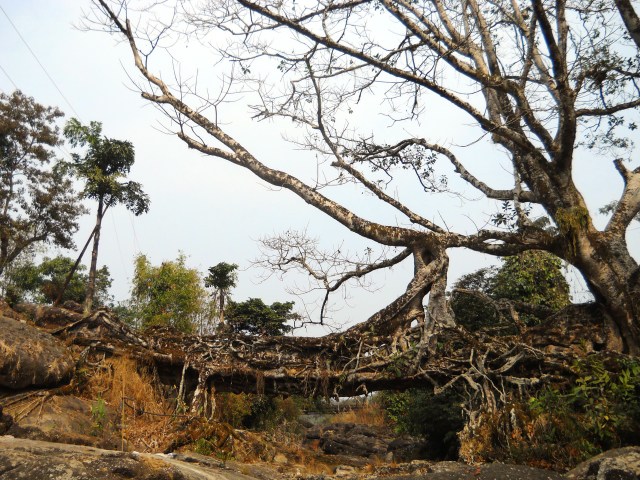
| RIVER/STREAM: | WAH AMLAYEE |
| LENGTH: | 14.1 m |
| WIDTH AT CP: | 1.5 m |
| HEIGHT AT CP: | 2.8 m |
| GPS: | N25.22826 E92.00876 |
| ALTITUDE: | 607 m |
| SR: | 5 |
| NOTES: | This living root bridge spans the Amalayee river, which bisects the settlement of Nongbareh. The roots are strong and well-established, though damaged in places. The tree is considered by the locals to not be in good health. The structure is surrounded by houses, and the path it services is in constant use. Latex extraction appears to have occurred many years ago, but has been effectively banned. It is said to be a very ancient living root bridge. |
NOTE: PLEASE GO TO ANALYTICS AND ANALYSIS (APRIL 2017 DRAFT) FOR METHODOLOGIES. LR PROJECT DESIGNATION DOES NOT REFLECT LOCAL NAMES
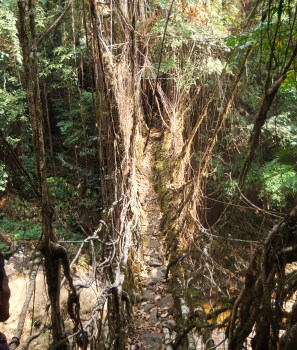
| RIVER/STREAM: | WAH AMLAMAR |
| LENGTH: | 29 m |
| WIDTH AT CP: | 1.8 m |
| HEIGHT AT CP: | 5.3 m |
| GPS: | N25.22949 E92.03191 |
| ALTITUDE: | 542 m |
| SR: | 8 |
| NOTES: | This root bridge is in the best condition in the Kudeng Rim area. It is being very actively maintained. A new span is being developed above the currently-in-use primary span. The new span is being created by wrapping young ficus elestica roots around bamboo poles. The bridge is used often by local villagers walking between the villages of Kudeng Rim and Kudeng Thymmai. Latex cutting on the bridge has been outlawed. Most of the roots that make up the bridge are quite thin, and walking across the bridge, as of January 2016, it was still noticeably wobbly. Otherwise it would have a SR rating of 9 or 10. |
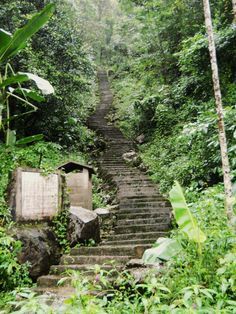
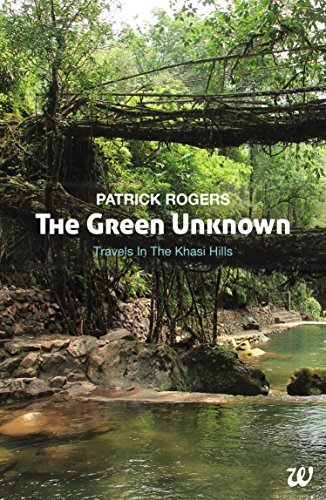 Title:The Green Unknown: Travels in the Khasi Hills
Title:The Green Unknown: Travels in the Khasi Hills
Writer: Patrick Rogers
Publishing House: Westland
Date of Publication: September 18th 2017
Rating: 5 stars
“Closer together,tiny groups of twinkling lights, glowing like star clusters,appeared as night fell.Dozens of villages seemed to hang in the moonlight itself.I didn’t know their names but like Riwar, and like Katarshnong,I knew that each one was its own world, with its own history and myths,own its own joys and sorrows, its own heroes and villains.They looked like such little places, yet no one person knew everything they contained.”
India. The mention of the name brings to mind countless pictures. Colourful, mysterious, sacred and strange. One of the countries that have always fascinated me . Its mysticism, the wealth of myths and legends, the weirdly haunting combination of different religions. In this beautiful book by Patrick Roger, we are transported to a different part of the…
View original post 413 more words

Hi folks. Just wanted to share some info on my next book about the Khasi Hills. Right now, I’m scraping together funds for a new expedition to Meghalaya. I have a new page for it here. I’ll be trekking for about six weeks, and then will be writing a new book about it.
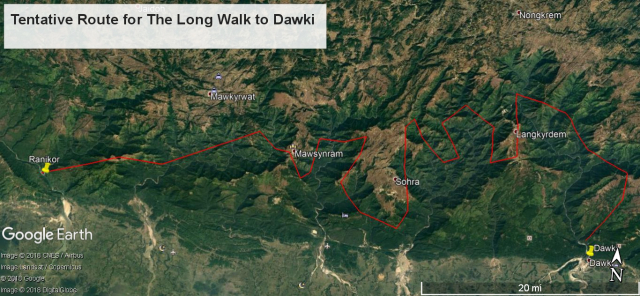
The focus is still going to be digging up info on root bridges. Whatever information I find will wind up on this blog (new entries will be factored into the analytics section, and also given separate blog pages). During the trek I’m planning, the idea is to cover as much wider swath of ground, and determining if root bridges are to be found, or if they ever existed, across the entire region known as Riwar…it would be very interesting to find out that root bridges were common throughout all of southern Meghalaya. However, finding a definite demarcation, a place where evidence for living architecture both current and historic, ceases, would also be useful. Also, a secondary objective of the trek is to collect folk lore about the bridges, and to gather information on the supernatural beliefs pertaining to the bridges and ficus elastica trees generally.
Anyway, check out my GoFundMe page for more info on the book, and also more pictures…needless to say, even a Facebook share would help mightily!
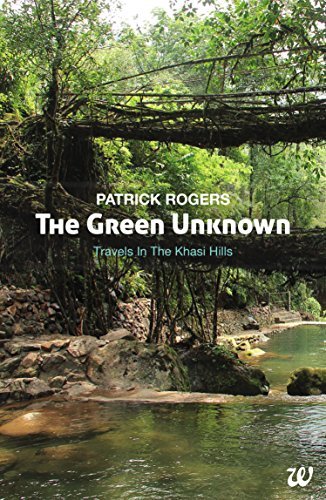 The Green Unknown: Travels in the Khasi Hills is Patrick Rogers’ first-person account of traveling by foot in northeast India in order to document the presence and locations of a rare architectural eco-wonder known as a “living root bridge.” These are found only in northeast India. No comprehensive listing of them exists. It had been thought that they were few in number. But on previous travels in India, Rogers had heard rumors of the existence of far more root bridges than the few that had been identified and catalogued. And so he headed into the Khasi Hills alone to find them. On his first trek, besides his backpack he had only a hand-drawn map from a native to the area. On subsequent treks, he ventured further in without a map, relying on his experience and information he could obtain from Khasis that he met along the way.
The Green Unknown: Travels in the Khasi Hills is Patrick Rogers’ first-person account of traveling by foot in northeast India in order to document the presence and locations of a rare architectural eco-wonder known as a “living root bridge.” These are found only in northeast India. No comprehensive listing of them exists. It had been thought that they were few in number. But on previous travels in India, Rogers had heard rumors of the existence of far more root bridges than the few that had been identified and catalogued. And so he headed into the Khasi Hills alone to find them. On his first trek, besides his backpack he had only a hand-drawn map from a native to the area. On subsequent treks, he ventured further in without a map, relying on his experience and information he could obtain from Khasis that he met along the way.
I read The…
View original post 702 more words